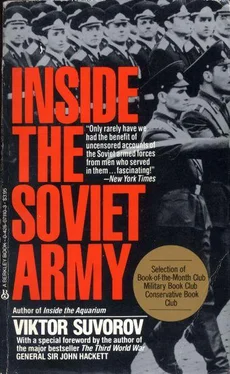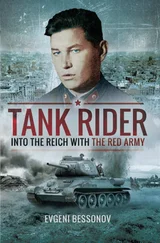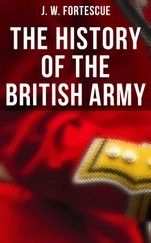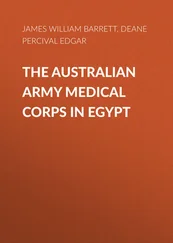Provisions, spare parts, etc. are, quite simply, not supplied.
2
Now let us see how this works in practice. A division which is up to full strength, fully equipped, fed and fuelled, with more than 2,000 tons of ammunition, is moving up into action from the second echelon. This division can spend from three to five days in action, without rest for either its soldiers or its officers. The wounded are evacuated to the rear by the medical battalion, after first aid has been given.
Its companies, battalions and regiments waste no time waiting for spare parts for equipment which has been damaged. They simply throw it aside. The repair and refitting battalion mends whatever it can, cannibalising one tank to repair two or three others, removing its engine, tracks, turret and anything else which is needed. Any piece of equipment which is seriously damaged is left for removal to the rear by the Army's or the Front's mobile tank repair workshop.
In action, the division fights with great determination, but its numbers dwindle. Some of its fighting equipment is returned after repair, but not a great deal. After three to five days of hard fighting, the survivors are sent back to the second echelon, their place being taken by a fresh division which has been well fed and fully rested. From the remnants of the old division, a new one is quickly put together. Combat equipment is provided by the tank repair workshops. The fact that it belonged to some other division only the day before is immaterial. Reinforcements reach the new division from the hospitals-whether these soldiers and officers formerly belonged to other divisions, Armies or Fronts is also immaterial. With them arrive equipment from the factories and reservists-some of whom are older, others still very young boys. The division shakes down, exercises and allows its soldiers to get all the sleep they need. Then, after five days, it moves up into action, fully fed and fuelled, with 2,000 tons of ammunition.
Often, while it is reforming, a division receives entirely new equipment, straight from the factory, but it may also be issued with older material taken from store, while its own, or what remains of it, is taken from it for some other division which is also re-forming, not far away.
Frequently, after a particularly punishing series of battles, a division cannot be re-formed. In this event all its commanders from company level upwards are withdrawn and what is left of the division is administered by the deputies to the battalion and regimental commanders and by the deputy divisional commander. This remnant will continue to fight, to the last man, while the divisional commander and his subordinates are in the rear, receiving new equipment and new soldiers. Within a short period of time they return to the battle in which what was left of their former division perished so recently.
One most important element needed for the rebuilding of a new division is its old colours. A fresh division can be set up very quickly around the old colours. But if the colours are lost-that is the end of the division. If such a thing should happen, all its former commanders are sent to penal battalions, where they expiate their guilt with blood, while their division is disbanded and used to bring others up to strength.
Here is an example from the history of the 24th Samara-Ulyanovsk Iron Division, with which I entered Czechoslovakia in 1968.
The division was established in 1918 and was one of the best in the Red Army. Lenin corresponded personally with some of its soldiers. It was active in the war against Germany from the very beginning of hostilities and distinguished itself in the fighting near Minsk until, as part of the 13th Army, it found itself encircled. Part of the division managed to break out but its colours were lost. Despite its past achievements, the division was disbanded and its various officers were tried by military tribunals. In 1944, when the Red Army once again reached and then crossed the Soviet frontiers, a special commission began questioning local inhabitants in an attempt to discover where Soviet officers and soldiers who had been killed in action during the first days of the war were buried. A peasant, D. N. Tyapin, told the commission how he had found the body of a Soviet officer, wrapped in a flag, and how he had buried the body, with the flag. The grave was immediately opened and the colours of the 24th Iron Division were found. The flag was immediately sent away for restoration and, just as quickly, a new division was formed and given the old colours, the battle honours and the title of the old division. Today the 24th Iron Division is one of the most famous in the Soviet Army. However, despite the fact that it distinguished itself in the battle which ended the war, it was never made a Guards division. It was not forgiven for the loss of its colours.
1
I adore weapons. Of every sort. I love military equipment and military uniforms. One day I shall open a small museum, and the first exhibit which I shall buy for my museum will be an American jeep. This is a real miracle weapon. It was designed before the Second World War and it served from the first day to the last, like a faithful soldier. It was dropped by parachute, it was soaked in salt water, it smashed its wheels on the stony deserts of Libya and sank into swamps on tropical islands. It served honourably in the mountains of Norway and of the Caucasus, in the Alps and the Ardennes. And, since the war, can any other military vehicle have seen so many battles-Korea, Vietnam, Sinai, Africa, the Arctic, South America, Indonesia, India, Pakistan? And is there any sort of weapon which has not been installed on a jeep? Recoilless guns, anti-tank rockets, machine guns. And it has worked on reconnaissance duties, as an ambulance, a patrol vehicle, a commander and an ordinary military workhorse.
And how many types of tanks, guns, aircraft, rockets have come and gone in the time of the jeep? They were important and impressive, the jeep was grey and undistinguished. But they have gone and the jeep is still there. And how many times have they tried to replace the jeep? But it is indispensable. In the desert, more reliable than a camel, in the grasslands faster than a leopard, in the Arctic hardier than a Polar bear.
Another exhibit in my museum will be a Kalashnikov automatic assault rifle. Not one of those the terrorists used to kill the Olympic athletes or the one I had with me in Czechoslovakia or one of those the Communists killed doctors with in Cambodia. No, it will be one of the thousands captured by the American marines in Vietnam and used in their desperate attempt to halt Communism and to avert the calamity which threatened the Vietnamese people.
American soldiers in Vietnam often mistrusted their own weapons and preferred to use their Kalashnikov trophies. This was not so simple, for they could hardly expect to be supplied with the proper rounds for these weapons but they used them nevertheless, capturing more ammunition as they fought. What is the secret of the Kalashnikov? It is uncomplicated and reliable, like a comrade-in-arms, and these are the two qualities of greatest importance in a battle.
2
My museum will have weapons from everywhere-from Germany and Britain, France and Japan. But the greatest number will come from the Soviet Union. I hate the Communists, but I love Soviet weapons. The fact is that Soviet designers realised, decades ago, the simple truth that only uncomplicated and reliable equipment can be successful in war. This is as true as the fact that the only plans which will succeed are those which are simple and easily understood and that the best battledress is the simplest and most hard wearing.
Читать дальше












